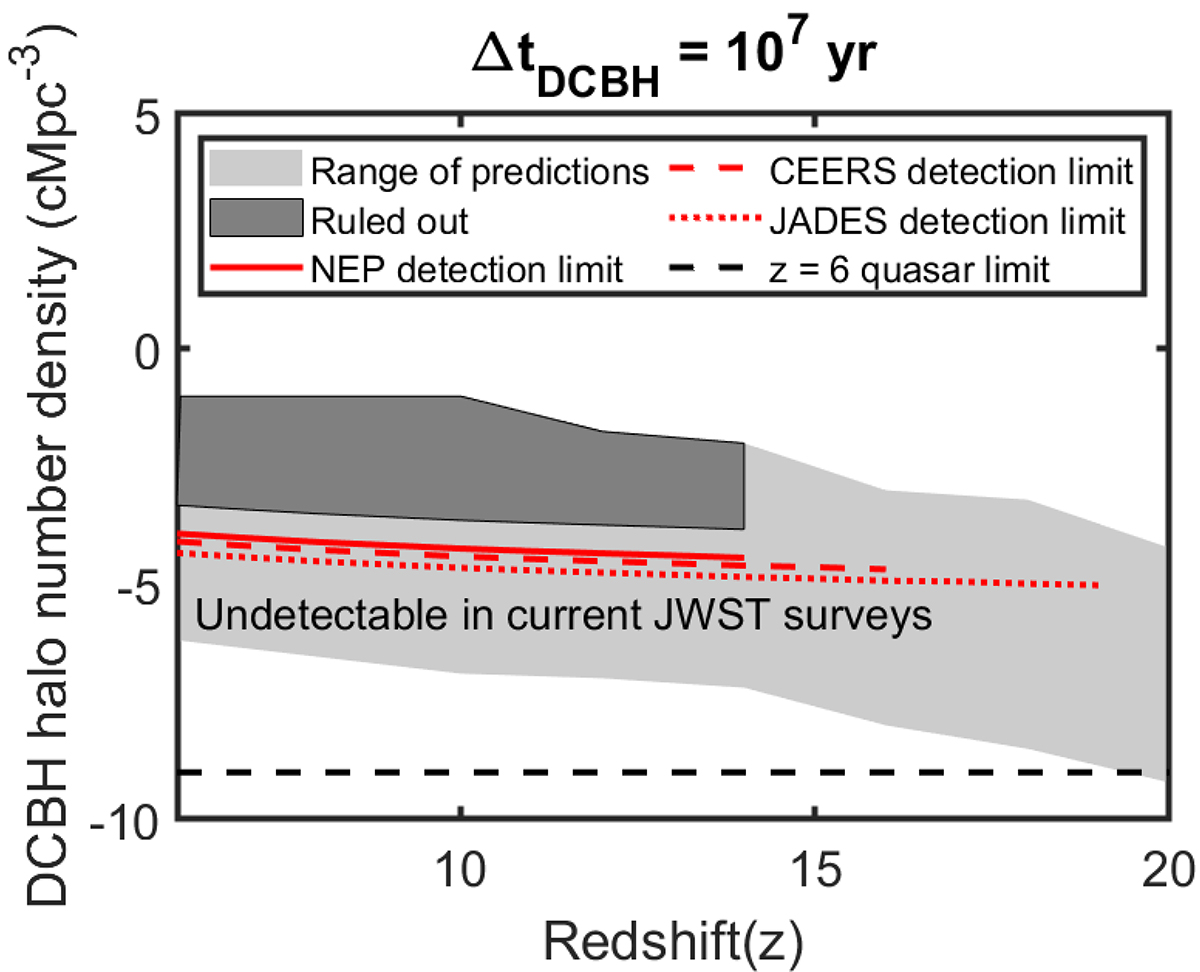Fig. 5.

Download original image
Detection limits on the number density of halos that may host DCBHs as a function of redshift. The light-gray region represents the approximate range of theoretical predictions of the comoving number densities of halos that may host DCBHs, based on the compilation by Habouzit et al. (2016). The red lines represent the lowest detectable host halo comoving density in the case of a DCBH that remains sufficiently bright for detection in at least four JWST/NIRCam filters and retains its characteristic spectral signatures for 10 Myr given the total survey areas of PEARLS NEP (four spokes; solid red line), CEERS (dashed red) and JADES (dotted red). The part of the parameter space ruled out by the current limit derived in this paper is marked by the dark-gray region. The dashed black line represents the approximate z = 6 quasar number density DCBH models must exceed prior to these redshifts to explain the SMBH powering these objects.
Current usage metrics show cumulative count of Article Views (full-text article views including HTML views, PDF and ePub downloads, according to the available data) and Abstracts Views on Vision4Press platform.
Data correspond to usage on the plateform after 2015. The current usage metrics is available 48-96 hours after online publication and is updated daily on week days.
Initial download of the metrics may take a while.


